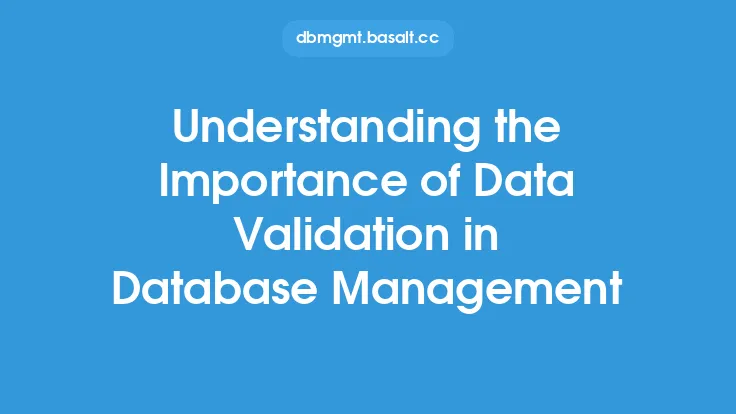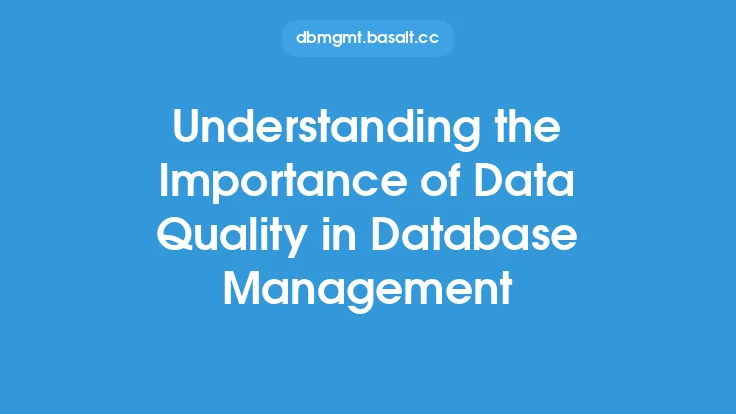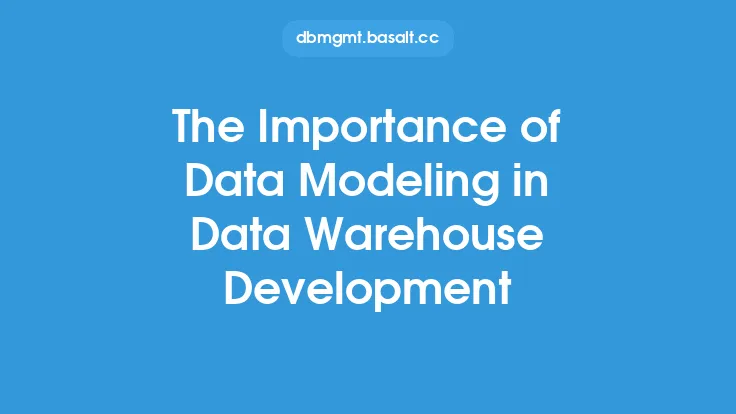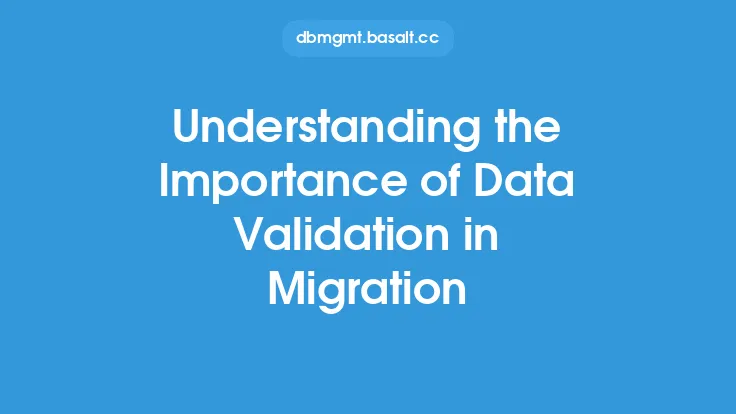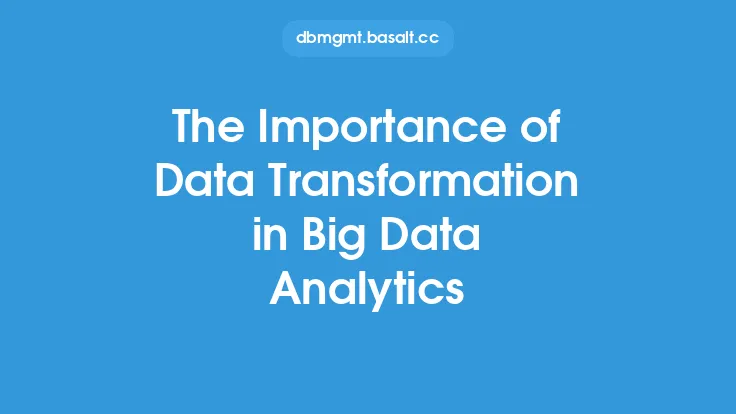Data validation is a critical component of restoration processes, ensuring that the recovered data is accurate, complete, and consistent. In the context of database backup and recovery, data validation plays a vital role in verifying the integrity of the restored data, thereby preventing potential errors, inconsistencies, and security breaches. This article delves into the importance of data validation in restoration processes, highlighting its significance, benefits, and best practices.
Introduction to Data Validation
Data validation is the process of verifying the accuracy, completeness, and consistency of data. In the context of data restoration, it involves checking the recovered data against a set of predefined rules, constraints, and standards to ensure that it meets the required quality and integrity standards. Data validation can be performed manually or automatically, using specialized tools and software. The goal of data validation is to detect and correct errors, inconsistencies, and anomalies in the data, thereby ensuring that the restored data is reliable, trustworthy, and usable.
Benefits of Data Validation in Restoration Processes
Data validation offers several benefits in restoration processes, including:
- Improved data quality: Data validation ensures that the restored data is accurate, complete, and consistent, thereby improving its overall quality.
- Reduced errors: Data validation helps detect and correct errors, inconsistencies, and anomalies in the data, reducing the risk of errors and data corruption.
- Enhanced security: Data validation helps prevent security breaches by detecting and preventing unauthorized access, data tampering, and other malicious activities.
- Increased efficiency: Data validation automates the process of checking data integrity, reducing the time and effort required to verify data accuracy and completeness.
- Better decision-making: Data validation ensures that the restored data is reliable and trustworthy, enabling organizations to make informed decisions based on accurate and complete data.
Types of Data Validation
There are several types of data validation, including:
- Format validation: Verifies that the data conforms to a specific format, such as date, time, or numeric formats.
- Range validation: Checks that the data falls within a specified range, such as a valid range of values for a particular field.
- Pattern validation: Verifies that the data matches a specific pattern, such as a phone number or email address.
- Cross-validation: Checks that the data is consistent across multiple fields, such as verifying that a customer's name and address match.
- Business rule validation: Verifies that the data conforms to specific business rules, such as checking that a customer's order total is within a valid range.
Best Practices for Data Validation in Restoration Processes
To ensure effective data validation in restoration processes, organizations should follow these best practices:
- Develop a data validation plan: Establish a clear plan for data validation, including the types of validation to be performed, the frequency of validation, and the criteria for validation.
- Use automated tools: Leverage automated tools and software to perform data validation, reducing the time and effort required to verify data integrity.
- Validate data at multiple levels: Validate data at multiple levels, including at the field level, record level, and file level.
- Use data quality metrics: Establish data quality metrics to measure the accuracy, completeness, and consistency of the restored data.
- Continuously monitor and improve: Continuously monitor and improve the data validation process, updating the plan and procedures as needed to ensure that the restored data meets the required quality and integrity standards.
Technical Considerations for Data Validation
From a technical perspective, data validation in restoration processes involves several considerations, including:
- Data format and structure: Understanding the format and structure of the data, including the types of fields, records, and files.
- Data encoding and compression: Considering the encoding and compression schemes used to store and transmit the data.
- Data encryption and decryption: Handling encrypted data, including decrypting the data during the restoration process.
- Data integrity checks: Performing data integrity checks, such as checksums and digital signatures, to verify the accuracy and completeness of the restored data.
- Database management system: Understanding the database management system used to store and manage the data, including its features, limitations, and constraints.
Conclusion
Data validation is a critical component of restoration processes, ensuring that the recovered data is accurate, complete, and consistent. By understanding the importance of data validation, its benefits, and best practices, organizations can ensure that their restoration processes are effective, efficient, and reliable. By leveraging automated tools and software, developing a data validation plan, and continuously monitoring and improving the process, organizations can verify the integrity of their restored data, preventing potential errors, inconsistencies, and security breaches.
